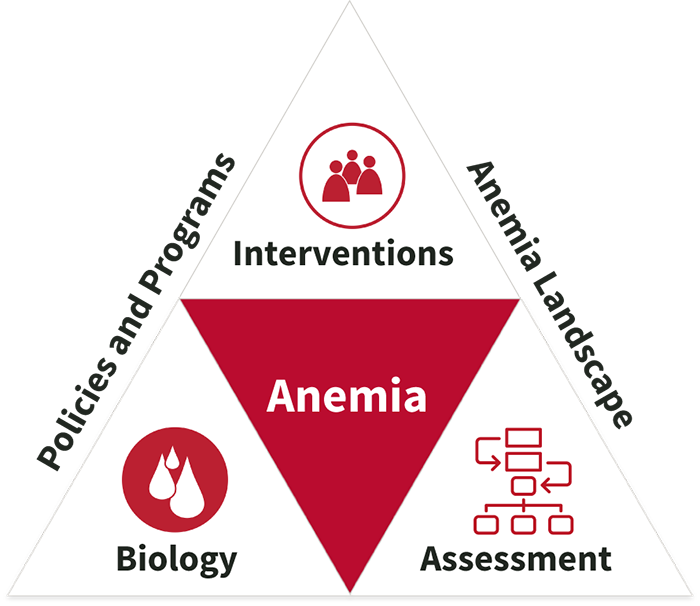The various causes of anemia require diverse and context-specific strategies to strengthen multi-sectoral anemia policy and programming. Policy-makers and program planners have developed population-level policies to reduce anemia to allow for efficient allocation of available resources.
To reach populations in need, translate policies into programs. Practitioners should design these programs designed with an eye for sustainability by incorporating the latest information on cost and cost effectiveness, with the goal of reaching the populations most vulnerable to micronutrient deficiencies and poor health.
We found 62 resource(s)
Development and Rollout of National Maternal Anemia Materials: Experience from Mozambique
Information, Education and Communication Materials published by Maternal and Child Survival Program in
This case study describes the process of development of social and behavior change resources for the program to to reduce iron deficiency anemia in women in Mozambique
Understanding the Process of Strengthening Multi-Sectoral Efforts for Anemia Reduction: Qualitative Findings from Sierra Leone and Uganda
Journal Article published by Int J Health Plann Manage in
This paper presents key findings and lessons learned from Sierra Leone and Uganda's experiences establishing national-level anemia coordination platforms
Multi-Sectoral Anemia Efforts at the National Level in Uganda
Technical Report published by SPRING in
This process documentation identifies the successes and challenges of establishing a multi-sectoral anemia platform in Uganda, analyzes the key factors that led to outcomes, and identifies potential areas for making improvements to the process in terms of sustainability of efforts. This process documentation uses data from two rounds of semi-…
WHO Recommendations on Antenatal Care for a Positive Pregnancy Experience
Guideline/Guidance published by World Health Organization in
This WHO guideline provides recommendations for routine antenatal care (ANC) for pregnant women and adolescent girls and aims to complement existing WHO guidelines on the management of specific pregnancy-related complications. The guideline addresses the following questions: 1) What evidence-based ANC practices improve outcomes and lead to a…
Guideline: Daily Iron Supplementation in Adult Women and Adolescent Girls
Guideline/Guidance published by World Health Organization in
This WHO guideline provides evidence-based recommendations on daily iron supplementation in menstruating adult women and adolescents, as a public health intervention for the prevention of anemia and iron deficiency. The recommendation in this guideline is intended for a wide audience, including policymakers, their expert advisers, and technical…
Compendium of Actions for Nutrition
Information, Education and Communication Materials published by United Nations System Standing Committee on Nutrition in
The Compendium of Actions for Nutrition (CAN), developed by the UN Network for SUN/REACH Secretariat in consultation with the Food and Agriculture Organization (FAO) of the United Nations, the International Fund for Agricultural Development (IFAD), UNICEF, the World Food Programme, WHO, and academic experts, is a practical resource that compiles…
WHO Guideline: Use of Multiple Micronutrient Powders for Point-of-Use Fortification of Foods Consumed by Infants and Young Children Aged 6-23 Months and Children Aged 2-12 Years
Guideline/Guidance published by WHO in
This WHO guideline provides global, evidence-informed recommendations on the use of multiple micronutrient powders for point-of-use fortification of foods consumed by infants and young children aged 6–23 months and children aged 2–12 years. The guideline is intended to help Member States and their partners in their efforts to make evidence-…
Guideline: Iron Supplementation in Postpartum Women
Guideline/Guidance published by WHO in
This WHO guideline reviews the evidence on the safety and effectiveness of iron supplementation in postpartum women.



